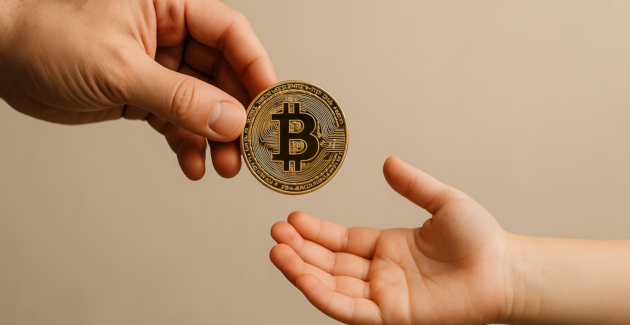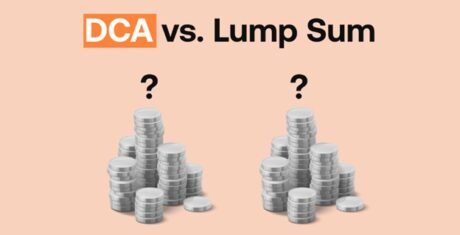Key Sections
The subtle erosion of our money’s value is a quiet concern in today’s economy, often masked by words of controlled inflation. While official figures, primarily the Consumer Price Index (CPI), report an approximate 88% rise in prices since the year 2000, a closer look beneath the surface reveals a more pronounced reality. The actual expansion of the U.S. M2 money supply during this same period paints a starkly different picture, surging by a staggering +363%.

This significant divergence, a chasm of 275% between the official narrative and the underlying monetary expansion, isn’t just an abstract economic concept. It has real-world consequences that touch every corner of our financial lives. From the diligent saver watching their nest egg slowly diminish to the astute investor seeking genuine returns, the retiree relying on fixed income, and the everyday wage earner feeling the pinch of reduced purchasing power, this hidden inflation impacts us all. Understanding this fundamental mismatch is precisely why exploring alternative solutions like Bitcoin has become so critical.
The CPI, A Flawed Mirror Reflecting Inflation
The Consumer Price Index (CPI) holds a prominent position as the U.S. government’s primary yardstick for measuring inflation. Its influence permeates critical aspects of our economy, from determining Social Security benefit adjustments to shaping interest rate decisions made by the Federal Reserve.
However, the CPI is far from a complete and accurate reflection of the inflationary pressures within our economic system. Its limitations are significant:
- Narrow Scope: The CPI only tracks the price fluctuations of a specific basket of consumer goods and services. It inherently excludes the expansion of the overall money supply, a crucial driver of inflation.
- Susceptibility to Manipulation: The methodologies used to calculate CPI are not immune to political influence and are subject to periodic changes. These adjustments often have the effect of understating the true increases in the cost of living.
- The Mask of Technological Deflation: Declining prices in certain technological goods, such as televisions or data storage devices, can create a deceptive illusion of low inflation, effectively masking more widespread inflationary pressures across other essential goods and services.
- A Convenient Narrative: Over the past quarter-century, the CPI has conveniently grown at a compound annual rate of approximately 2.5%, aligning closely with the Federal Reserve’s publicly stated inflation “target.” Yet, the lived experience of rising costs for everyday necessities paints a distinctly different picture, one where real-world inflation feels considerably higher and is demonstrably accelerating.
M2 Money Supply, Unveiling the Authentic Inflation Narrative
To truly grasp the extent of inflation, we must shift our focus from tracking select prices to following the actual flow and creation of money within the economy. The M2 money supply offers a more comprehensive view, encompassing:
- Physical currency in circulation
- Demand deposits (checking accounts)
- Savings accounts
- Retail money market funds
The figures are stark. In the year 2000, the M2 money supply stood at approximately $4.65 trillion. By 2025, this figure has ballooned to an astounding $21.65 trillion (as of March). This represents an explosive increase of over +363%, translating to an average annual growth rate of roughly 6%. This rate is more than double the growth rate indicated by the CPI during the same period.
The fundamental reason this disparity matters lies in the very definition of inflation as a monetary phenomenon. When a significantly larger pool of currency is created to chase a relatively stable quantity of goods and services, the inevitable outcome is a rise in prices across the board, even if the CPI’s limited scope and methodological adjustments fail to fully capture the pace of this increase.
The Silent Erosion of Your Wealth
Stepping back to gain a broader perspective reveals the practical and damaging consequences of this unchecked monetary inflation:
- The Illusion of S&P 500 Gains: On the surface, the returns of the S&P 500 appear impressive, growing from approximately 1,320 points in 2000 to 5,686 in 2025, a compound annual growth rate of around 8.25%. However, when these gains are adjusted to account for the real monetary inflation as indicated by the growth in M2, a sobering reality emerges: investors have, in fact, experienced a net loss in purchasing power. The nominal gains are being outpaced by the devaluation of the currency itself.
- The Betrayal of Savings: If individuals have placed their trust in the CPI as an accurate reflection of inflation and believed that their portfolios were genuinely growing or that holding cash in a bank was a safe way to preserve their future wealth, they have been fundamentally misled. This is the insidious nature of monetary inflation, a silent tax that gradually siphons away purchasing power, often unnoticed until its cumulative effects become undeniable. This misrepresentation is not accidental; it is systemic.
Why Bitcoin Offers a Lifeline
Monetary inflation is far more than just an abstract economic statistic; it functions as a silent and regressive tax, disproportionately impacting those with fewer resources and eroding the fruits of their labor. The staggering 275% gap between the growth in the M2 money supply and the CPI unequivocally demonstrates that the conventional tools used to “measure” and, by extension, manage inflation are fundamentally flawed and fail to provide an accurate picture of the economic reality.
In this environment of monetary debasement and statistical obfuscation, Bitcoin emerges not just as an alternative, but as a potential solution. Its unique characteristics offer a powerful counterweight to the inflationary forces inherent in traditional fiat currency systems:
- Decentralization: Bitcoin operates outside the direct control and manipulation of central banks and governments, rendering it immune to the discretionary monetary policies that often lead to currency devaluation.
- Finite Supply: With its mathematically enforced cap of 21 million coins, Bitcoin possesses inherent scarcity. This fixed supply makes it impervious to the endless expansion of the money supply that drives monetary inflation.
- Global and Censorship Resistant: Bitcoin transcends geographical boundaries and cannot be easily censored or confiscated, empowering individuals with true financial sovereignty and control over their wealth.
In a financial system often characterized by opacity and the gradual devaluation of currency, Bitcoin stands as a transparent, verifiable, and inherently scarce asset, a crucial hedge against the erosion of purchasing power, a powerful protest against the status quo, and ultimately, a potential solution to the insidious problem of monetary inflation.
Don’t let the hidden cost of inflation quietly diminish your wealth. Harness the transformative potential of Bitcoin and amplify its impact through the powerful tax advantages offered by IRAs. Consider opening a BitcoinIRA¹ account today and take tangible steps to protect and potentially grow your purchasing power in an increasingly inflationary world.









 3,500+ 5-Star Reviews
3,500+ 5-Star Reviews